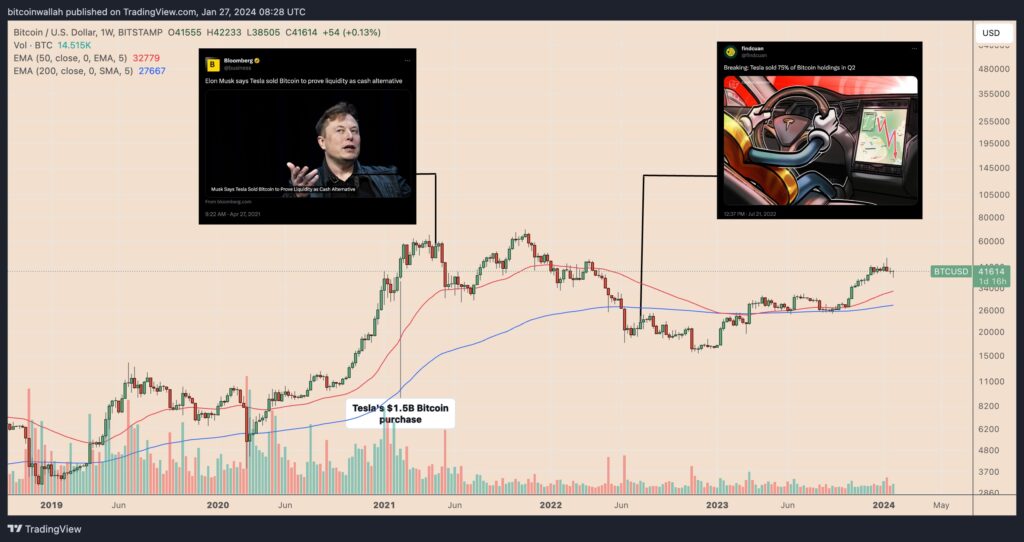Tesla’s decision not to “hodl” Bitcoin has resulted in a missed opportunity of over $300 million in profits. Since its groundbreaking $1.5 billion Bitcoin investment in February 2021, Tesla has liquidated 70% of its Bitcoin portfolio, showcasing a cautious approach in holding onto the remaining holdings.
The initial investment coincided with Bitcoin’s price at around $36,000, and since then, Tesla’s stock price has seen a decrease of approximately 40% against Bitcoin. Despite this, Tesla sold about 10% of its Bitcoin holdings in March 2021 and approximately 75% in the second quarter of 2022. Elon Musk, Tesla’s CEO, highlighted that these sales aimed to demonstrate Bitcoin’s liquidity and strengthen Tesla’s balance sheet during uncertain financial periods.

If Tesla had retained its entire Bitcoin investment, the hypothetical profit could have exceeded $300 million, given the current Bitcoin value of approximately $41,500. Nevertheless, the company has maintained its remaining Bitcoin holdings, estimated at around 9,720 BTC, signaling a more conservative stance amidst expectations of a bullish year for Bitcoin.
Interestingly, Tesla’s previous Bitcoin sales aligned with quarters reporting weaker free cash flows—cash generated after necessary business expenditures. In periods of tighter cash, Musk utilized Bitcoin to support Tesla’s finances. However, with Tesla’s increasing free cash flows throughout 2023, this strategy may not be necessary moving forward.
For instance, in Q4 2023, Tesla reported strong free cash flow at $2.1 billion, contributing to a total of $4.4 billion for the year. Analysts foresee a potential rise in Bitcoin’s value in 2024, citing the approval of spot Bitcoin exchange-traded funds in the United States and the anticipated impact of the upcoming Bitcoin halving event as key drivers behind their optimistic predictions. Tesla’s cautious approach may position it strategically as it navigates the evolving landscape of Bitcoin investments in the coming year.

